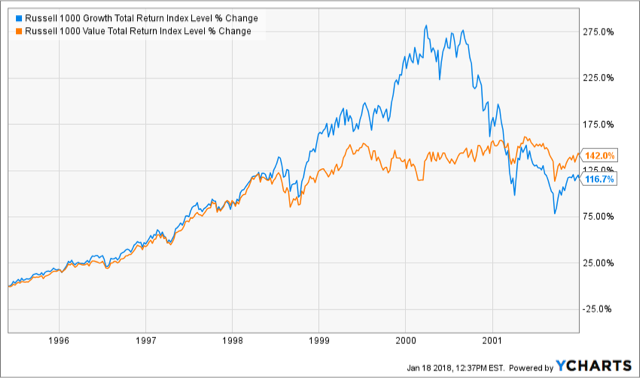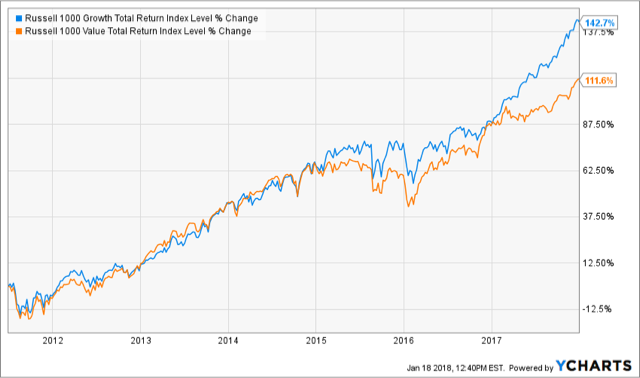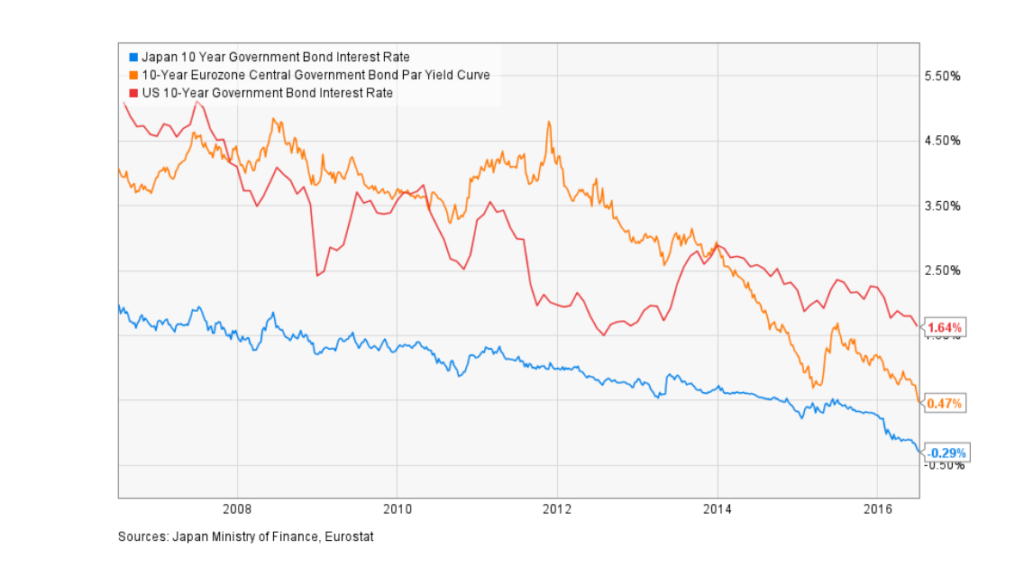We feel investors should have an information outlet for the financial markets that is thorough, but does not require a prerequisite degree in economics. We hope this makes our commentary informative and educational for all levels of investors. We have also included a glossary at the end of this commentary that defines terms marked with an asterisk (*).
Quarter in Review
| Asset Class† | 4th Quarter 2017 Return | Past 12 Months |
| International Stocks | -1.2% | 16.5% |
| U.S. Large Cap Stocks | -0.8% | 14.0% |
| U.S. Small Cap Stocks | -0.1% | 11.8% |
| Commodities | -0.4% | 3.7% |
| U.S. Bonds | -1.5% | 1.2% |
After posting nine consecutive quarters of gains, The S&P 500 finally broke its streak in the 1st quarter by posting its first negative quarter since the 3rd quarter of 2015. Along with a negative return, the quarter also ushered in more volatility which included more daily returns of -1% or worse (11) than in all of 2017.
The quarter started out strong, with gains for all equity markets through the month of January. This coincided with strong 4th quarter earnings reports which included mostly rosy guidance of future results due to the forthcoming lower tax rates. All that strength disappeared in an instant with the January jobs announcement by the U.S. Labor Dept. on February 2nd. On the surface, the report was stellar; Higher than projected hires were accompanied by an increase in hourly earnings to its highest year-over-year rate since 2009. While undoubtedly positive news for the labor force, the announcement added to the speculation that the Federal Reserve* will continue to raise interest rates, which increases the borrowing costs for companies. In response, U.S. treasury interest rates, which affect interest rates on everything from savings accounts to mortgages, rose to their highest levels in 4 years.
Further consternation in the markets arose in March when Facebook announced the misuse of data by a third party, breaching the privacy of its users. While it is no surprise that Facebook makes its money by selling its users’ data, the lack of controls within the company increased concerns that the “selling the data” model used by many in the tech world today is built on a weak foundation that could lead to continued messy outcomes.
Outlook
As mentioned above, the early results of the tax reform passed in late 2017 indicate the rise in profitability that was predicted by the supporters of the bill. This has correlated with analysts and economists raising their future profit projections for the stock market. All of this sounds splendid if you are an investor in the stock market, since shareholders are likely to see increased returns. It does however lead to a few questions. Since markets are generally valued on future expectations rather than the past, are the riches associated with the tax law already baked into stock prices? Also, are increased profits derived from a change in legislation a form of financial engineering, since the companies did little to increase investment and productivity?
The Role of Future Expectations
Economists and Brokerage firms are constantly updating their expected earnings per share* (EPS) for individual companies and for the market as a whole. This data is aggregated and widely used to measure the “value” of the market. While past results are used as a base for their projections, it is the future growth that is most widely regarded as the true measure of valuation. These projections are published weekly by Standard and Poors, the company behind the often-cited S&P 500 index. Below is a chart that shows how the expected earnings for 2018 (far right column) changed as 2017 earnings (middle column) went from expected to actual.
| Date | 2017 EPS | 2018 Projected EPS |
| 3/16/17 | 118.83 | 130.03 |
| 6/22/17 | 118.46 | 133.85 |
| 9/22/17 | 114.82 | 131.23 |
| 11/22/17 | 114.92 | 132.86 |
| 3/15/18 | 109.88 (actual) | 144.58 |
Source: Standard & Poors
The chart shows how the projections for 2018 EPS have increased substantially in the first quarter of 2018, despite the actual results of 2017 decreasing. While it is likely true that company earnings will continue to increase due to the tax law, it may be acting as a disguise for a corporate environment where growing earnings is becoming increasingly difficult.
Tax Changes as Financial Engineering
This brings us to the financial engineering aspect of the tax law. While the tax code has indeed changed, the operations within companies have not. Parallels can be drawn between tax code results and the trend that has occurred for the past few years where companies have been using their profits to repurchase their own shares. This repurchasing phenomenon has been jocularly called financial engineering because when shares are repurchased, the company is able to report higher earnings per share, not because the true earnings have increased, but rather that the number of shares has declined. Lowering the tax rate now has a similar effect; companies have a smaller tax bill which leads to higher earnings numbers. In order for analysts to continue to raise expectations for market EPS it is going to have to come from innovation and better management at some point.
As 2018 progresses we will get a better idea as to whether the tax cuts will be more than a temporary boost to corporate earnings; something that America needs to continue this already historic bull market*.
Glossary
Federal Reserve – The United States’ central bank, which is responsible for regulating the banking industry and controlling the money supply through monetary policy.
Earnings-Per-Share – The amount of earnings or profit that a company makes allocated for each share that is outstanding in the market for that period.
Bull Market – Centuries old term (along with Bear Market) used to describe positive (Bull) or negative (Bear) market sentiments. The origins are disputed, but the term may be due to bulls lifting their horns upward to attack, while a bear swats its paws downward.
† Indices used to represent asset classes:
U.S. Large Cap Stocks – S&P 500
U.S. Small Cap Stocks – Russell 2000
International Stocks – MSCI ACWI ex-U.S.
U.S. Bonds – Barclays Aggregate
Commodities – Bloomberg Commodity
IMPORTANT INFORMATION
The information presented here is not specific to any individual’s personal circumstances.
To the extent that this material concerns tax matters, it is not intended or written to be used, and cannot be used, by a taxpayer for the purpose of avoiding penalties that may be imposed by law. Each taxpayer should seek independent advice from a tax professional based on his or her individual circumstances.
These materials are provided for general information and educational purposes and represents Wilson Capital’s views based upon publicly available information from sources believed to be reliable—we cannot assure the accuracy or completeness of these materials. The information in these materials may change at any time and without notice.
Wilson Capital is a Registered Investment Advisor (“RIA”), registered in the state of Massachusetts. Wilson Capital provides asset management and related services for clients nationally. Wilson Capital will file and maintain all applicable licenses as required by the state securities boards and/or the Securities and Exchange Commission (“SEC”), as applicable. Wilson Capital renders individualized responses to persons in a particular state only after complying with the state’s regulatory requirements, or pursuant to an applicable state exemption or exclusion.
Click here to download a printable PDF 1Q18-Investment-Letter-Final.pdf (4421 downloads )



